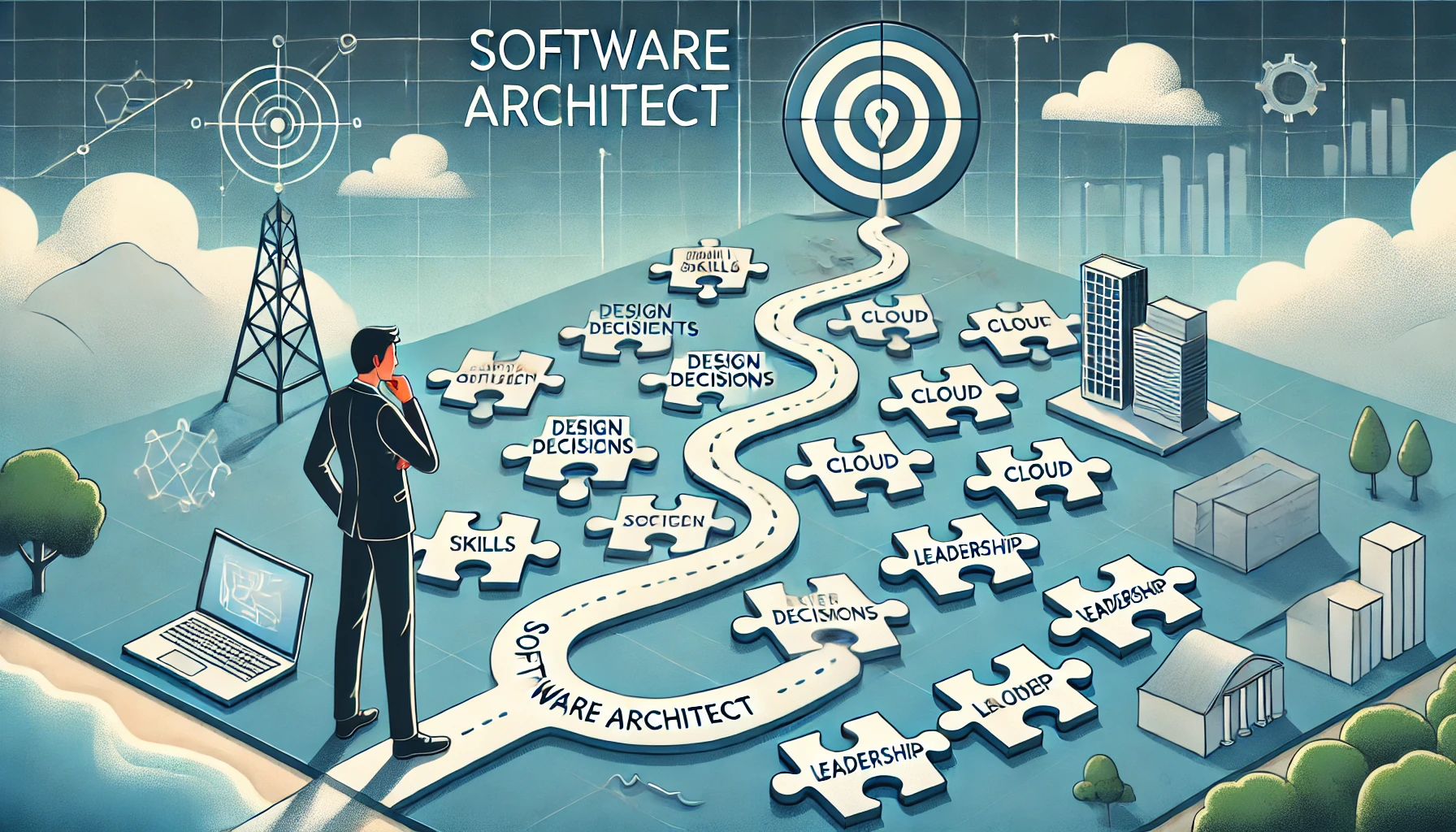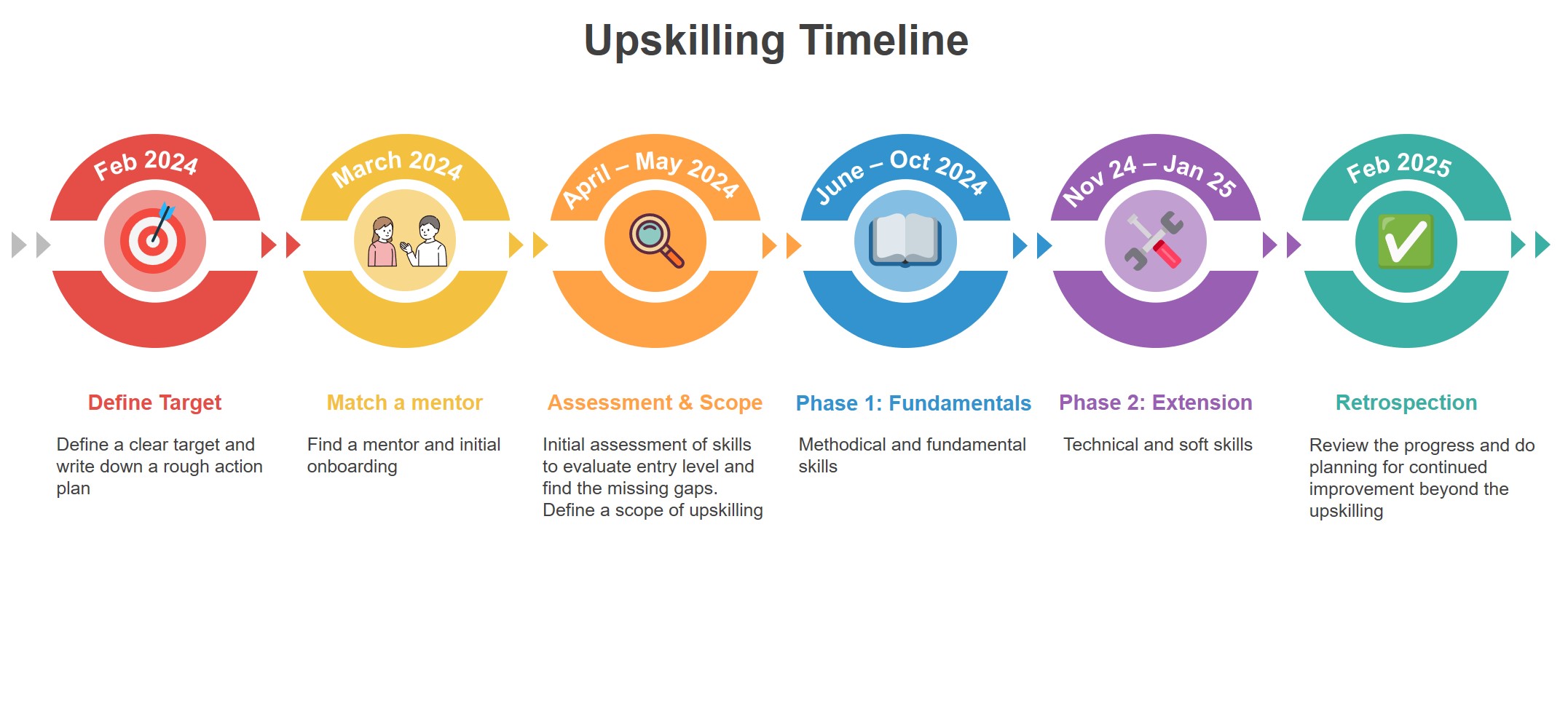Becoming a Software Architect: My Journey of Growth and Learning
Published:

Introduction
Over the past year, I have worked towards transitioning into a software architect role. My goal was to build essential skills, gain hands-on experience, and develop a structured approach. This article shares my journey, the strategies that proved effective, and key lessons learned.
Upskilling is a personal endeavor, with no universal formula. However, core principles remain critical: motivation, consistency, mentorship, and hands-on practice.
Motivation
From the early stages of my career, I was fascinated by the big picture—how different components of a system interact to create a functioning product. Earning the AWS Solutions Architect Associate certification solidified my interest. Though my previous role as a technical consultant provided a solid foundation, I needed a structured learning plan to specialize in software architecture.
Learning Strategy
My strategy followed an iterative approach with flexible iteration lengths, adapting to workload fluctuations. I took ownership of my learning, acquiring knowledge independently and reinforcing it through hands-on architectural katas (exercises), as well as applying it to my daily work on current project. At the end of each iteration, my mentor and I held a sync meeting, which served as a mix of sprint review, retrospective, and planning (as known in Scrum methodology). During these sessions, we reviewed past material and exercises, clarified uncertainties, analyzed areas for improvement, and defined the next focus areas.
My Upskilling Timeline
I approached my learning journey in well-defined phases, ensuring steady progress. Consistent planning and breaking long-term goals into smaller milestones helped me maintain focus.

Defining My Target
A clear target and structured plan helped me focus on relevant skills, track growth, and adjust strategies effectively rather than engaging in unnecessary learning.
Finding a Mentor
A mentor played a crucial role in my journey by providing industry insights, guidance, and real-world perspectives. I found my mentor within my company, but I know there are other ways to connect with experienced architects, such as online mentorship platforms like Codementor. While human mentorship is invaluable, I also used ChatGPT for structured learning, design reviews, and decision-making simulations.
Initial Assessment and Scope
My mentor conducted an initial assessment to identify my strengths and gaps. Defining the scope of upskilling was challenging, so we referenced The Open Group Professional Certification Program. We refined a list of 50+ skills, focusing on fundamental ones first.
Building Fundamentals
I concentrated on core software architecture topics, including business analysis, functional and non-functional requirements, modeling techniques, risk management, project management, and architectural decision-making. I combined theoretical learning with hands-on experience by supporting my project’s lead architect in architectural tasks on my current project.
Expanding Beyond the Basics
Once I had a strong foundation, I moved to the second phase, which involved developing essential soft skills such as effective communication and leadership. I also explored technical topics like security and architectural design patterns.
Retrospection
My mentor and I reviewed my progress, identified gaps, and planned for continued improvement beyond the upskilling phase.
Activities
I engaged in multiple activities:
- Implemented the company-specific architecture framework (combining Arc42 and C4-model) in my current project.
- Applied theoretical knowledge in daily work by assisting the project’s architect.
- Practiced architectural katas both individually and in a group.
- Organized a team of fellow volunteers within the company to practice architectural katas in a group setting.
- Attended online workshops such as Technical Presentations and Architecture as Code, organized by O’Reilly.
- Read Fundamentals of Software Architecture and many other resources.
Post-Upskilling
Upskilling doesn’t stop after a predefined period. As the IT industry evolves, continuous learning remains essential. I plan to explore DevOps, cloud architectures, security, and further refine my leadership and communication skills.
Lessons Learned
Reflecting on my journey, I identified key takeaways:
- Practice is essential. Hands-on experience reinforces learning; theory alone is not enough.
- Mentorship accelerates learning. Insights from experts are invaluable.
- Small milestones sustain motivation. Breaking learning into phases made it manageable and sustainable.
- A structured roadmap ensures focus. A well-defined learning path helped me stay focused and track growth.
- Architectural katas are a powerful learning tool. They improved problem-solving skills and exposed me to diverse challenges.
Final Thoughts
Upskilling to a software architect role was a rewarding and transformative experience. By following a structured approach, leveraging mentorship, and continuously applying my knowledge, I was able to transition successfully. For those considering a similar path, I encourage you to stay motivated, seek guidance, and commit to lifelong learning.
